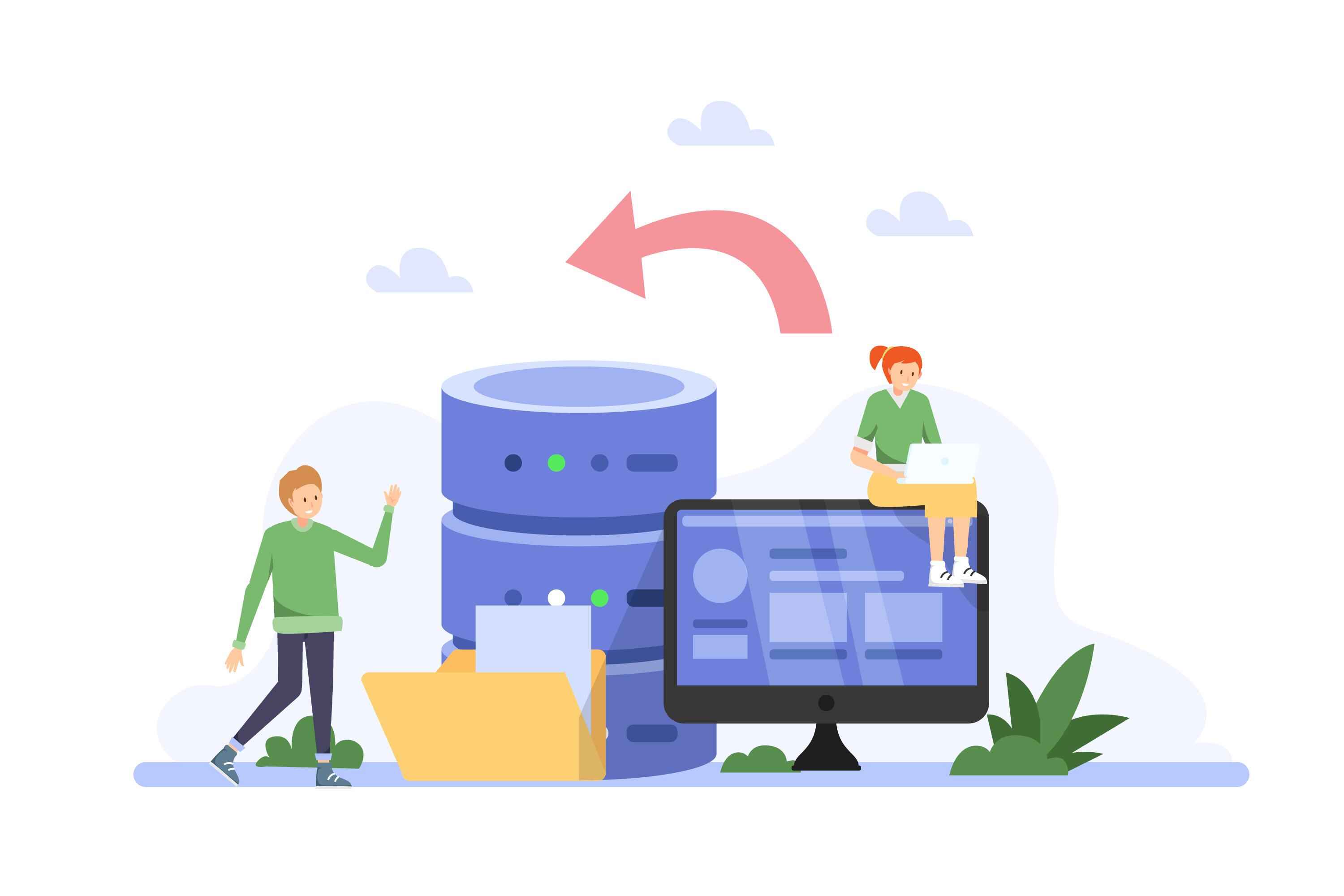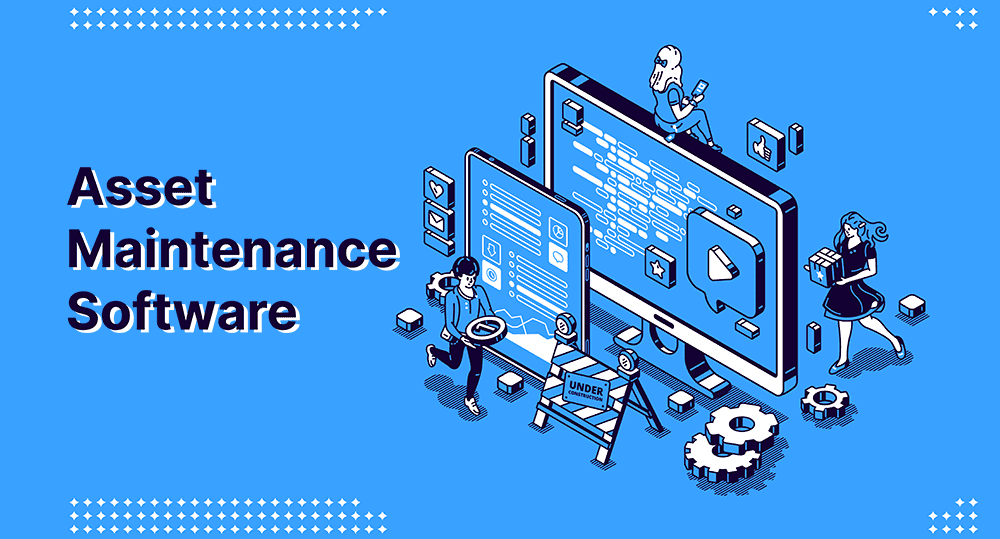In today’s digital-first business environment, asset maintenance has become essential to any organization’s success. Proper maintenance of assets, ranging from equipment and machinery to buildings and facilities, can help businesses reduce costs, increase efficiency, and improve safety.
However, managing assets can be challenging, especially if the organization relies on manual processes. Fortunately, asset maintenance software has emerged as a solution to help businesses manage their assets effectively. Whether you run a small business or a large enterprise, this guide will help you find the right asset maintenance software that suits your needs and budget.
Related article: A Complete Guide to IT asset Inventory
What is Asset Maintenance Software?
Asset maintenance software is a type of computer program designed to help organizations manage their assets and maintenance tasks more effectively. It typically includes features such as asset tracking, work order management, preventive maintenance scheduling, inventory management, and reporting.
With asset maintenance software, organizations can track the location and condition of their assets, schedule and manage maintenance tasks, and automate many of the processes involved in maintenance management. It can help improve asset uptime, reduce maintenance costs, and increase the overall efficiency of maintenance operations.
Asset maintenance software can be used in a variety of industries, including manufacturing, facilities management, transportation, and healthcare, among others. It can be implemented as a standalone system or integrated with other software applications such as enterprise resource planning (ERP) systems or computerized maintenance management systems (CMMS).
Benefits of Asset Maintenance Software
Asset maintenance software is a powerful tool that can help businesses manage and maintain their assets more effectively. Here are the key benefits of using asset maintenance software:
Improved asset performance:
Asset maintenance software can help businesses keep track of asset performance data, such as maintenance history, downtime, and repair costs. This data can be used to identify trends and patterns that can help businesses optimize asset performance and prevent equipment breakdowns.
Reduced maintenance costs:
By implementing a proactive maintenance strategy, businesses can reduce maintenance costs by identifying and addressing issues before they lead to equipment failure. Asset maintenance software can help companies to schedule preventive maintenance tasks, track maintenance costs, and monitor the effectiveness of their maintenance program.
Increased asset lifespan:
Regular maintenance can extend the equipment’s lifespan, reducing the need for costly replacements. Asset maintenance software can help businesses keep track of maintenance schedules and ensure that equipment is serviced on time, which can help extend its lifespan.
Improved safety and compliance:
Asset maintenance software can help businesses ensure that equipment is maintained correctly and meets safety and compliance standards. It can help prevent accidents and avoid costly fines and penalties.
Increased efficiency:
Asset maintenance software can help businesses streamline maintenance processes and reduce the time and resources required to manage and maintain assets. It can help improve overall business efficiency and productivity.
Asset maintenance software can help businesses reduce costs, improve asset performance, and increase efficiency, making it an essential tool for any organization that relies on equipment to operate.
Challenges of implementing Asset Maintenance software

Asset maintenance software is an essential tool for any organization that manages a large number of assets. However, implementing such software can be challenging, and organizations need to be aware of the following challenges:
Data accuracy:
Asset maintenance software requires accurate data to function effectively. However, organizations often struggle with data accuracy due to issues such as incomplete or outdated asset information. It can lead to erroneous reports and decisions, ultimately impacting the maintenance process’s efficiency.
Integration:
Asset maintenance software must be integrated with other systems, such as enterprise resource planning (ERP) software, to provide a comprehensive view of an organization’s asset management process. However, integrating software can be challenging, and organizations need to ensure that their maintenance software is compatible with other systems.
Implementation and training:
Implementing new software can be time-consuming and requires extensive training for the maintenance staff. Organizations must have sufficient resources to implement and train their staff on the latest software.
Cost:
Asset maintenance software can be expensive, and organizations must consider the costs of implementing and maintaining the software over time. Additionally, organizations may need to invest in new hardware or infrastructure to support the software.
Change management:
Implementing new software can disrupt an organization’s existing processes, and employees may resist change. Organizations need to ensure that they have a change management plan in place to address any resistance to the new software.
Maintenance strategies:
Asset maintenance software supports a variety of maintenance strategies, such as preventive, predictive, and corrective maintenance. However, organizations must choose the right strategy based on asset type, usage, and maintenance goals. Choosing the wrong plan can result in inefficient asset maintenance and increased costs.
Implementing asset maintenance software requires careful planning, data accuracy, integration, implementation and training, cost considerations, change management, and choosing the right maintenance strategy. Organizations can effectively manage their assets and improve maintenance efficiency by addressing these challenges.
Find the right Asset Maintenance Software for your business.
Asset maintenance software is crucial for companies that rely on equipment, machinery, and other assets to run their operations. It helps organizations keep track of the condition of their assets, schedule maintenance and repairs, and ensure that assets are available and functioning properly when they are needed.
Finding the right asset maintenance software for your business involves several key considerations. Here’s how you identify and evaluate different options:
Identify your business needs:
Start by identifying your specific needs and requirements. What types of assets do you need to manage? What are your maintenance and repair workflows? Do you need to track inventory or schedule preventive maintenance? Understanding your specific needs will help you narrow down your options and find a software solution that fits your requirements.
Research different software options:
Once you clearly understand your business needs, you can start researching different software options. Look for software solutions with the necessary features and capabilities, such as inventory management, work order management, asset tracking, and reporting. You can search for options online, ask for recommendations from industry peers, or consult with a software vendor.
Evaluate software vendors:
When evaluating different software vendors, consider factors such as their reputation, customer support, and pricing. Look for vendors that have a proven track record of delivering reliable and effective software solutions and that offer responsive customer support and training.
Test the software:
Before committing to a software solution, testing it out and ensuring it meets your needs is essential. Many software vendors offer free trials or demos that allow you to explore the software’s features and functionality. Take advantage of these opportunities to evaluate the software’s ease of use, performance, and compatibility with your existing systems.
Make a decision:
Finally, once you have evaluated your options and tested different software solutions, it’s time to make a decision. Choose the software that best meets your business needs and that you feel confident using and supporting. Remember to factor in implementation costs, training, and ongoing support when deciding.
Following these steps, you can find the right asset maintenance software for your business and ensure your assets are properly managed and maintained to support your operations.
How To Maintain Your Asset Management Software

Asset management software is a powerful tool that helps organizations track, monitor, and manage their assets. However, like any other software, it requires proper maintenance to ensure it continues functioning effectively and efficiently. Here are some steps that you can take to maintain your asset management software:
- Keep your software up-to-date: Regularly check for updates to your software and install them as soon as they become available. These updates may include bug fixes, security patches, and new features that can improve the performance of your software.
- Backup your data: Performing regular backups of data is essential in case of any unexpected hardware or software failures. It ensures that you don’t lose any critical data and can restore it quickly in case of a system failure.
- Regularly perform maintenance tasks: Set up a schedule for performing regular maintenance tasks, such as data cleanup and system optimization. These tasks can help improve the performance of your software and prevent any potential issues from arising.
- Train your staff: Ensure your team is properly trained to use the software. It will prevent any accidental damage or misuse of the software and help ensure that it is used effectively.
- Monitor system performance: Keep an eye on the performance of your software to identify any potential issues before they become major problems. Use performance monitoring tools to track system usage, identify any potential bottlenecks, and optimize system resources.
By following these steps, you can help ensure that your asset management software continues to function effectively and efficiently, providing your organization with valuable insights into your assets and helping you make informed decisions about managing them.
Related article: Top Problems Due to Poor Asset Management
Final Note
Asset maintenance software is critical for any organization that relies on equipment, machinery, or other physical assets to operate efficiently. By automating and streamlining maintenance processes, these software solutions can help reduce downtime, extend the lifespan of assets, and improve overall productivity.
Additionally, modern asset maintenance software often includes advanced features such as predictive maintenance, which uses machine learning algorithms to forecast when maintenance is needed, further optimizing asset management. As technology continues to evolve, we can expect to see even more innovative asset maintenance software solutions that provide greater insight into asset performance and help organizations make more informed decisions about maintenance and repairs.
Ultimately, investing in asset maintenance software can benefit organizations of all sizes and industries, making it a worthwhile consideration for any business looking to optimize its asset management practices.



















